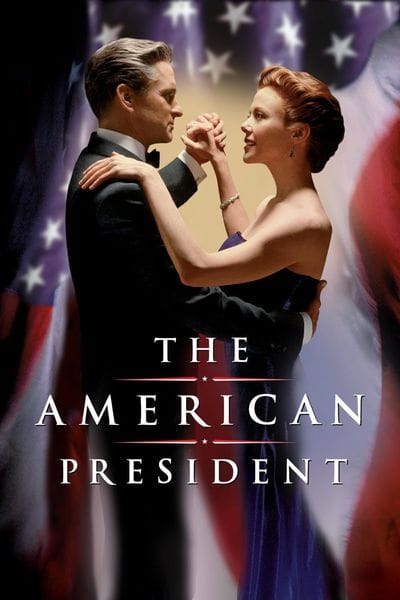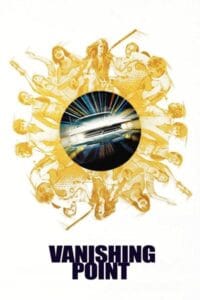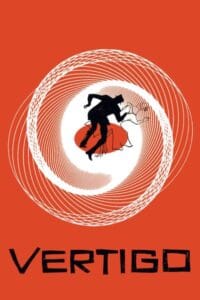Have you ever watched a movie that left you intrigued about its backdrop? Did the vibrant and picturesque settings of The American President capture your imagination, making you wish to explore these historically rich locations further? This film, directed by the talented Rob Reiner and written by the brilliant Aaron Sorkin, is not just a romantic drama; it’s a remarkable showcase of some iconic American locations that enhance the narrative and bring the story to life in vivid detail.
From the stunning vistas of the White House to the bustling streets of Washington, D.C., each location plays a crucial role in shaping the characters and their journeys. The film beautifully intertwines these locations with the unfolding romance and political intrigue, immersing viewers in the vibrant culture and history of America.
Join us as we delve into these captivating locations, uncovering the fascinating stories behind them and exploring how they contribute to the film’s ambiance. Let’s take a closer look at how these settings not only serve as a backdrop but also add depth to the characters’ experiences and the overall narrative, enriching our appreciation of this classic film.
City Locations
The American President takes viewers on a visual journey through various key locations across the United States. The film prominently features stunning settings such as Lake Tahoe in Northern California, the bustling cityscape of Los Angeles, and the political heart of the nation, Washington, D.C. Each of these cities plays a vital role in establishing the film’s atmosphere and connecting the audience with the characters’ experiences.
Lake Tahoe, Northern California
Lake Tahoe, with its majestic mountains and serene waters, serves as a picturesque backdrop that embodies the essence of nature’s beauty. In the film, it represents a retreat from the pressures of political life and the bustling activities in Washington, D.C. The scenes filmed here evoke a sense of tranquility and solitude, allowing President Andrew Shepherd (played by Michael Douglas) to reflect on his personal life, particularly his relationship with Wade (Annette Bening).
The Significance of Nature
Nature often plays a role in storytelling, and in The American President, Lake Tahoe illustrates the contrast between the chaotic world of politics and the serenity of personal connections. The film’s depiction of Lake Tahoe signifies the emotional retreat Shepherd seeks amidst his responsibilities, effectively showcasing how settings can influence a character’s journey.
Los Angeles, California
Los Angeles, the glamorous heartbeat of the entertainment industry, also finds its way into The American President. Film scenes set in this vibrant city highlight the complexities of celebrity and public perception in political life. The juxtaposition of the film’s serious themes against the lively backdrop of Los Angeles allows viewers to explore how politics and media intertwine, especially in the modern age of celebrity culture.
Urban Dynamics and Political Image
The portrayal of Los Angeles in the film serves to underline the evolving landscape of a president’s public image. With looming cameras and an ever-watchful eye from the press, the bustling streets of L.A. encapsulate the challenges leaders face in maintaining a balance between their private lives and public personas. This adds a captivating layer to the narrative, expanding on how location can evoke different emotional responses from both characters and viewers.
Washington, D.C.
As the political epicenter of America, Washington, D.C. is perhaps the most significant location in The American President. The city’s iconic landmarks, from the Capitol Building to the White House, ground the film’s political discourse and underscore the gravity of Shepherd’s role as president. The scenes shot in D.C. illustrate the complexities and nuances of governance, as well as the personal and political dilemmas faced by the characters.
Weaving Politics and Personal Narratives
Washington, D.C. isn’t just a backdrop; it’s a vibrant character that brings the story to life. The interactions and dialogues that unfold against this historic landscape highlight the weight of political decision-making, revealing the fine line between personal desires and public duty. By intertwining personal narratives with the political fabric of the city, The American President paints a compelling portrait of a leader navigating love and responsibility.
Location Types
Throughout the film, various location types play pivotal roles, enhancing the storytelling and character development. From intimate households to grand governmental buildings, each setting encapsulates different facets of life and politics.
America: The Essence of Home
The film’s various homes and apartments represent the essence of Americana, acting as sanctuaries for the characters. These intimate settings underscore the personal stakes involved in Shepherd’s decisions, providing a stark contrast to the grandeur of Washington, D.C.
NatureScapes: The Power of Natural Settings
Nature in The American President not only serves artistic purposes but also symbolizes moments of contemplation and connection. NatureScapes elevate emotional stakes, making pivotal moments feel more intimate and grounding for both characters and the audience.
Buildings and Offices: The Heart of Governance
The office buildings and government structures depicted in the film highlight the operational side of political life. From press conferences to heated discussions, these settings illustrate the complexities inherent in governance, providing audiences with a realistic glimpse into the life of a president.
Location Styles
The stylistic choices made throughout The American President are noteworthy, adding layers of depth to the film’s narrative.
Americana/Anywhere America: Reflecting the Everyman
The film’s Americana-inspired settings resonate with audiences, portraying the everyday aspects of American life. By choosing locations that reflect a quintessentially American identity, the film creates immediacy, making President Shepherd’s story relatable and grounded.
Federal Building and Office Building Style: Authority and Power
The iconic styles of buildings like the Federal Building are chosen to evoke a sense of authority. The grand architecture and stately presence of these structures serve as constant reminders of the power dynamics at play in the political landscape.
Parking Lot: A Setting for Serendipitous Encounters
Interestingly, even mundane locations such as parking lots play significant roles in the story. These less glamorous settings often serve as backdrops for pivotal character interactions, further driving home the idea that profound connections can occur in the most unexpected places.
About The American President
The American President transcends the boundaries of a typical romantic comedy; it emerges as a nuanced political drama that delves deep into themes of love, power, and the intricacies of the human condition. At the heart of this compelling narrative is President Andrew Shepherd, a charismatic leader portrayed with both charm and depth. He grapples with the unique challenge of balancing the immense responsibilities of his office while navigating the complexities of a burgeoning romance with the passionate environmental lobbyist Sydney Wade, played with grace and conviction.
As the story unfolds, the film brilliantly critiques the multifaceted challenges associated with holding public office—highlighting the relentless scrutiny that comes with the presidency, the expectations of the electorate, and the moral dilemmas that often arise. It shines a light on the personal sacrifices and compromises that leaders must confront, illustrating how public service can both enrich and complicate personal relationships. The dynamic between Shepherd and Wade not only serves as a romantic plotline but also raises essential questions about the intersection of love and political duty, making the film resonate on multiple levels.
The American President Locations
Throughout the film, the carefully selected locations play a vital role in adding critical context to character motivations and decisions. Each scene is thoughtfully set against backdrops that not only enhance the visual storytelling but also provide viewers with deeper insights into the intersecting worlds of love and politics. For instance, a bustling cityscape might symbolize the chaos of political ambitions, while a serene park could represent a moment of introspection for a character grappling with personal dilemmas. These contrasting environments illustrate how external settings reflect the internal struggles of the characters, deepening our understanding of their emotional journeys and the complex interactions that shape their lives. Through this intricate relationship between location and character, the film invites viewers to engage on multiple levels, enriching the overall narrative experience.
The Opening Scene in The American President
The film opens with powerful imagery, immediately drawing the audience into the intricate world of politics. The bustling atmosphere of Washington, D.C., with its honking cars and hurried pedestrians, establishes a palpable sense of urgency and significance that envelops the viewer. Iconic landmarks serve as a backdrop, reminding us of the historical weight this city carries. As President Shepherd steps into this complex terrain, viewers can feel the immense burden of his office pressing down on him, emphasizing the personal conflicts and moral dilemmas that lie ahead. The tension in the air is almost tangible, as each decision he makes could reverberate across the nation, affecting countless lives.
President Shepherd Meets Wade at the Banquet for the President of France Scene in The American President
The banquet scene serves as a turning point, where the professional and personal intertwine with electric energy. The opulence of the venue contrasts with the intimate undertones of their interactions, exemplifying how formal events can be the backdrop for unexpected connections. This vital moment paves the way for their developing relationship, highlighting the duality of their worlds.
Wade Returns President Shepherd’s Call Scene in The American President
The phone call scene showcases vulnerability, with Shepherd reaching out to Wade amidst political chaos. This candid exchange, set against the backdrop of their hectic lives, powerfully encapsulates the challenges of finding personal connection within the framework of public service.
Wade Confronts President Shepherd at the White House Scene in The American President
In this iconic scene, the White House serves as a symbol of power and authority. As Wade confronts Shepherd about his decision to back out of the environmental bill, their opposing viewpoints are heightened by their surroundings. This scene underscores how location can elevate tensions between people with differing beliefs.
The president plans to win Wade back scene in The American President
In a memorable scene, the president sits in his office, determined to win Wade back. He orders a car to take him to her home, ready to make his case despite MacInerney’s warning about the risks of going without security. Their exchange is filled with tension and humor as Shepherd declares his intentions: “I plan to stand outside her door until she lets me in, and I won’t leave until I win her back.” Though he admits he hasn’t worked out all the details, he’s certain it will involve some serious groveling. MacInerney skeptically asks if he’s just going to drive over, to which the president confidently replies, “A.J., I’m the Commander in Chief of the world’s most powerful army. You really think I can’t manage a ten-block drive?” Just then, Wade surprises them by bursting in, advising him to avoid DuPont Circle due to the traffic nightmare. Interestingly, this scene was filmed on a sound stage at Universal Studios, where you can still take a tour and see where the magic of The American President was created. Getting there is a breeze with public transit—just hop on bus lines 222, 224/690, or 240, or take the subway’s B Line (Red)!
The final scene in The American President
The final scene unfolds in the Old Executive Office Building at 1650 Pennsylvania Avenue NW, Washington, DC. It begins with the president delivering an impactful speech in the White House press room right before his State of the Union Address. He addresses the unfounded allegations and personal attacks made by Rumson against him and Wade. This scene is widely regarded as one of the highlights of the film, featuring Shepherd’s powerful words:
“In the past couple of months, Senator Rumson has suggested that being president is, to some extent, about character. While I’ve refrained from engaging in his attacks, I’ve been here three years and three days, and I can tell you without a doubt that being president is all about character.”
Ironically, this climactic moment takes place in the same location as the very first scene in this beloved film. Be sure to take a leisurely stroll around the grounds of the building to envision the steps Shepherd took alongside his aide Lewis on their way to the Oval Office.
Conclusion
By skillfully weaving personal narratives with political landscapes, The American President creates a nuanced commentary on the complexities of love and leadership. Each location serves a specific purpose, enhancing the film’s themes and character development. Through its masterful use of locations, The American President immerses viewers in its story and highlights the intricacies of the human experience. So, it is clear that locations serve a crucial role in shaping the film’s narrative and providing depth to its characters, making The American President a timeless classic.







